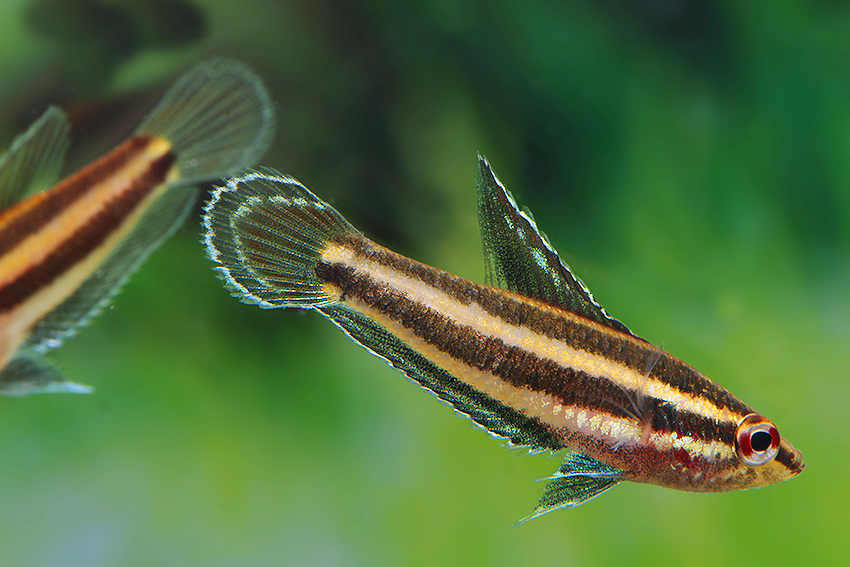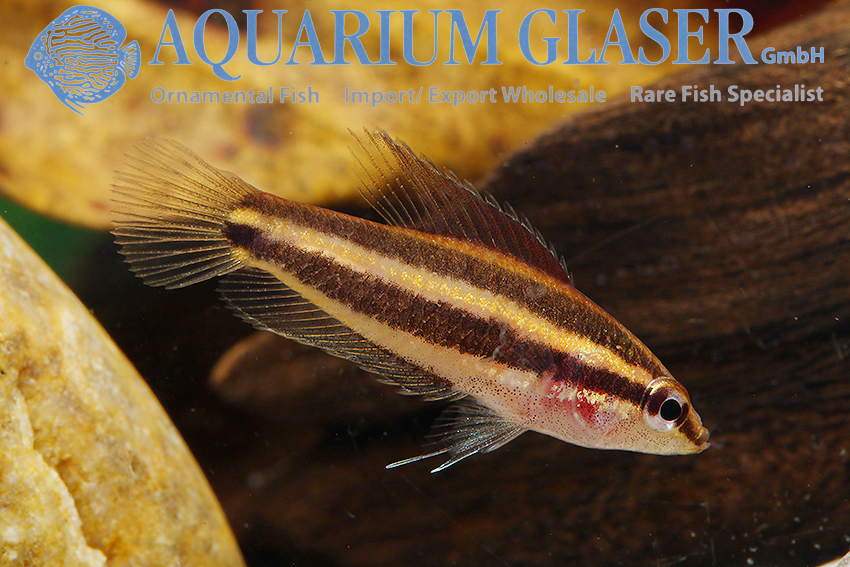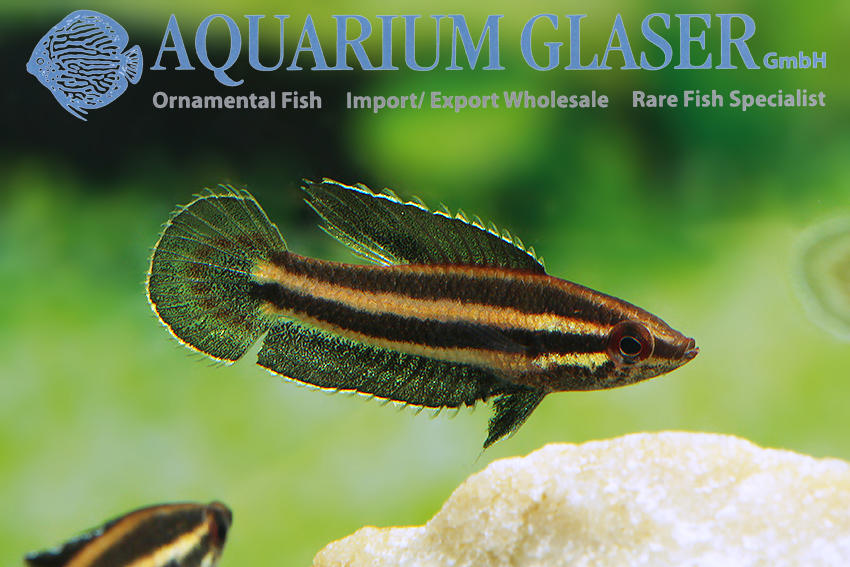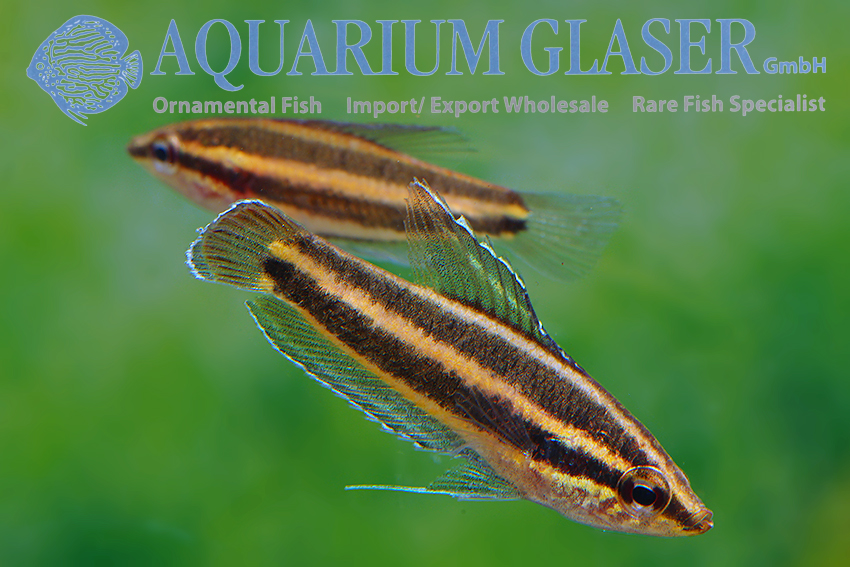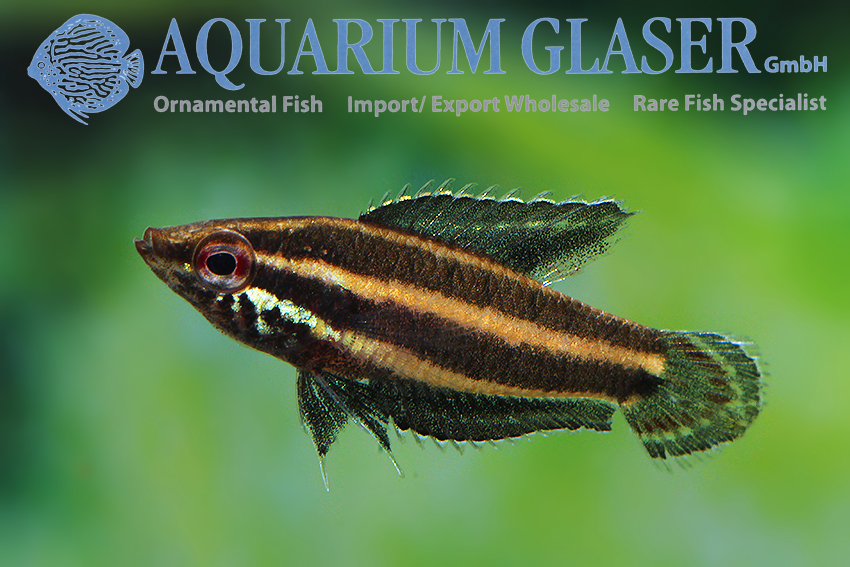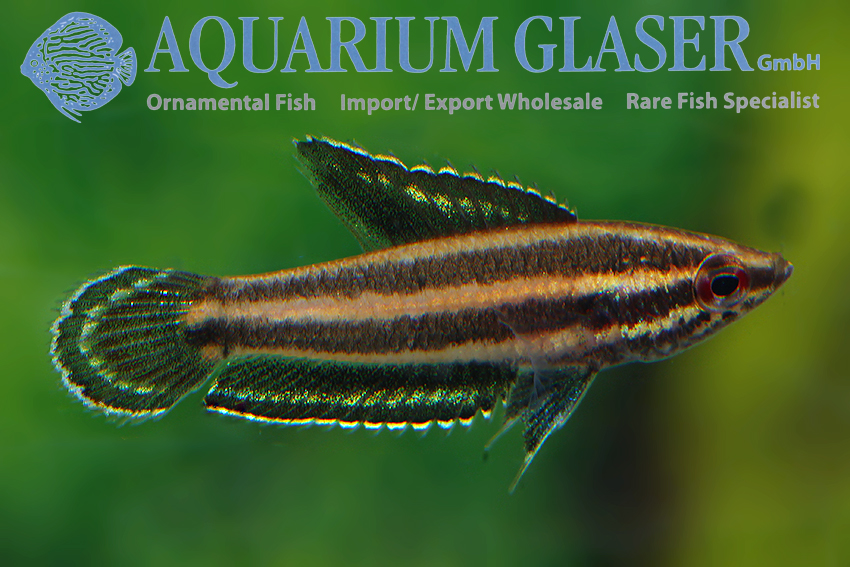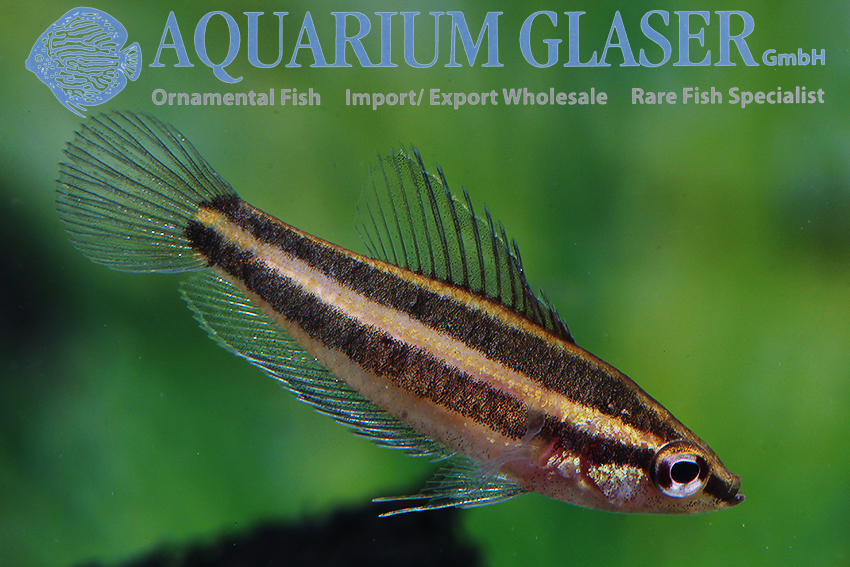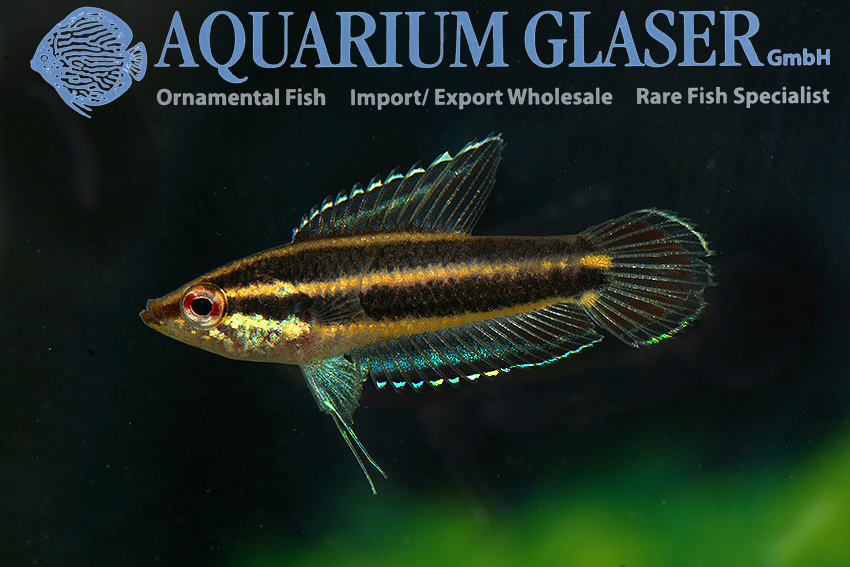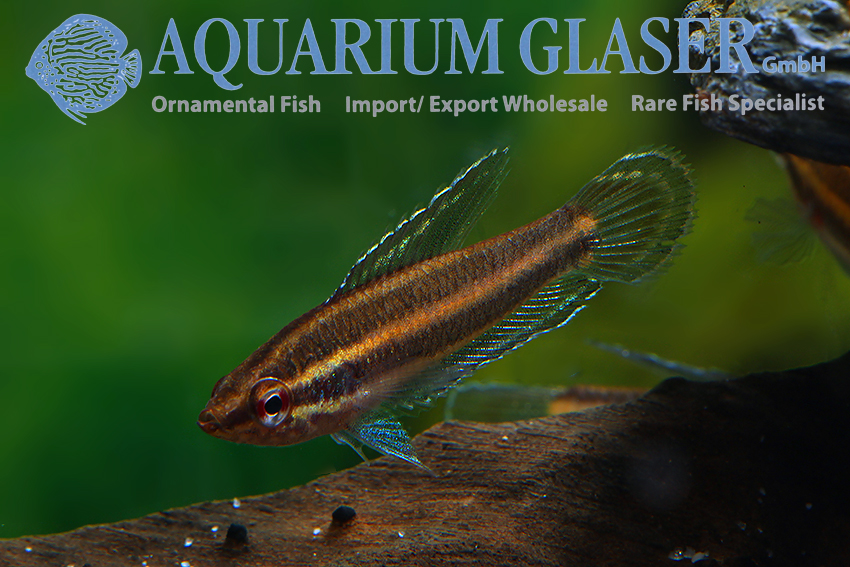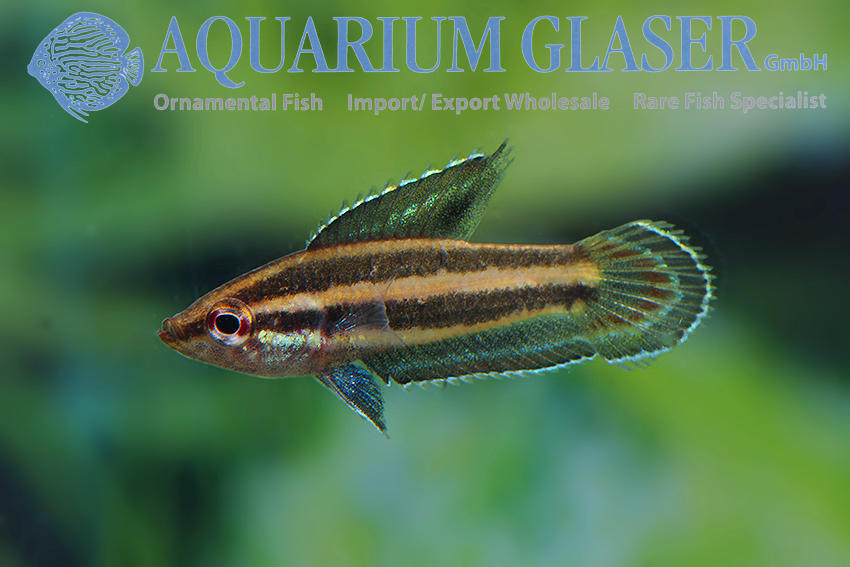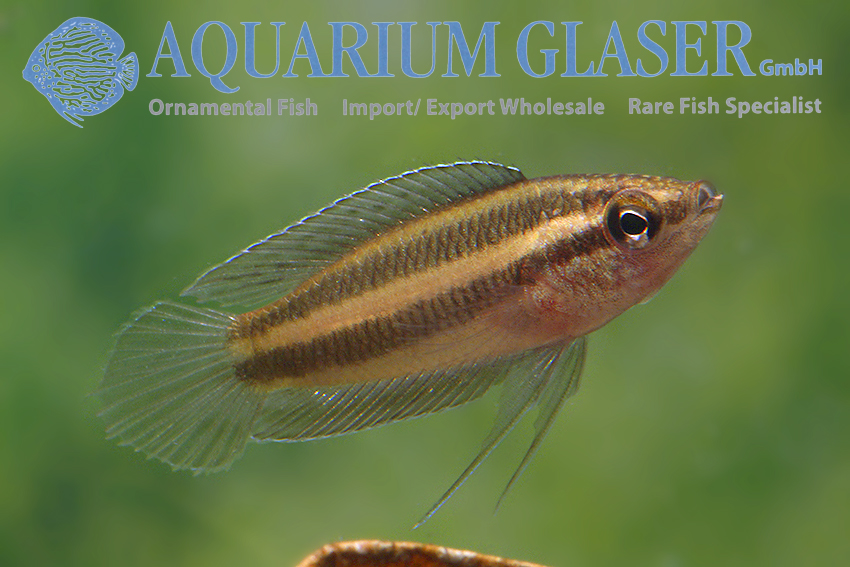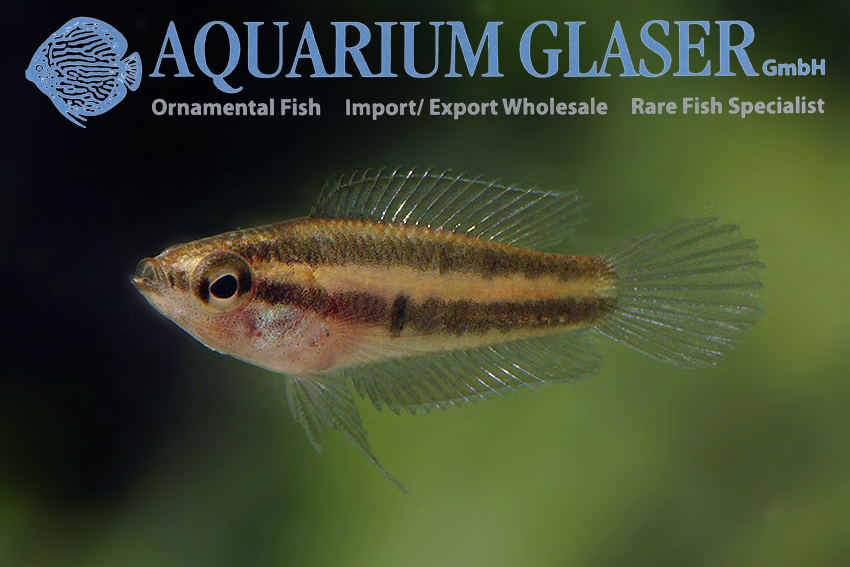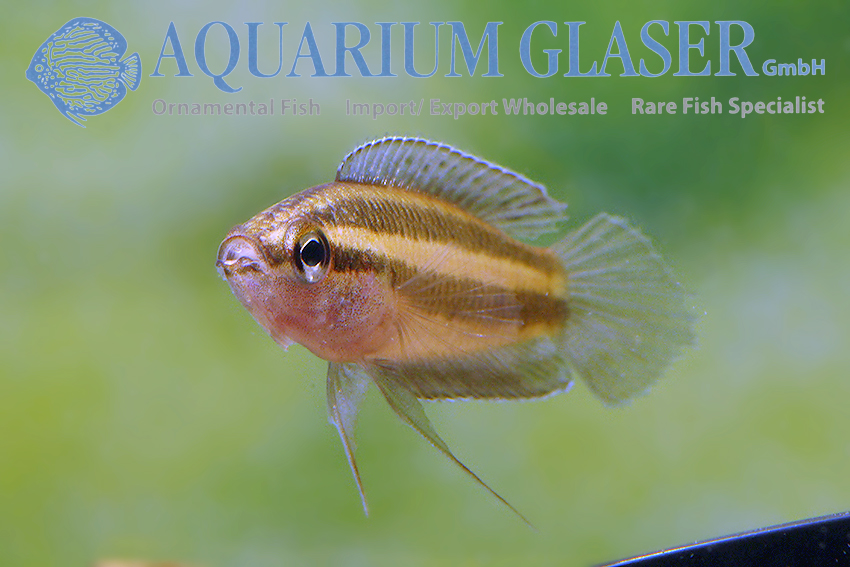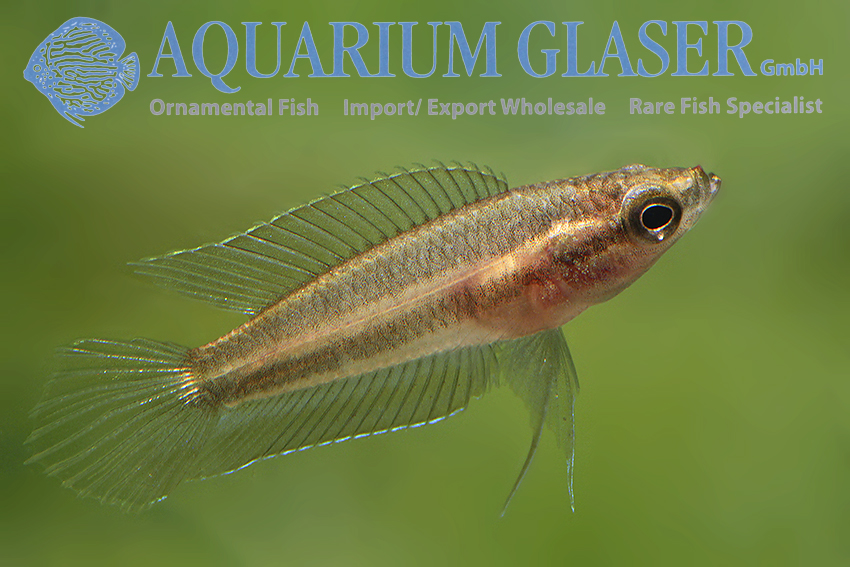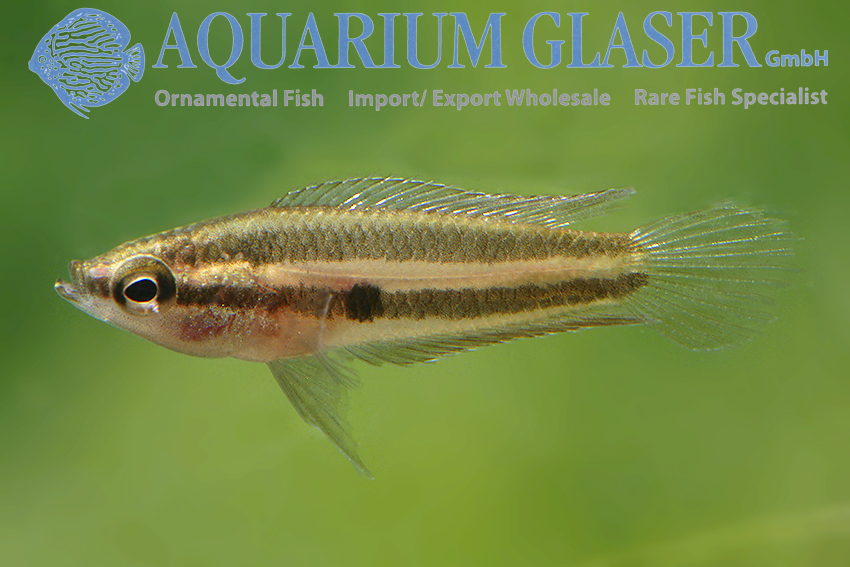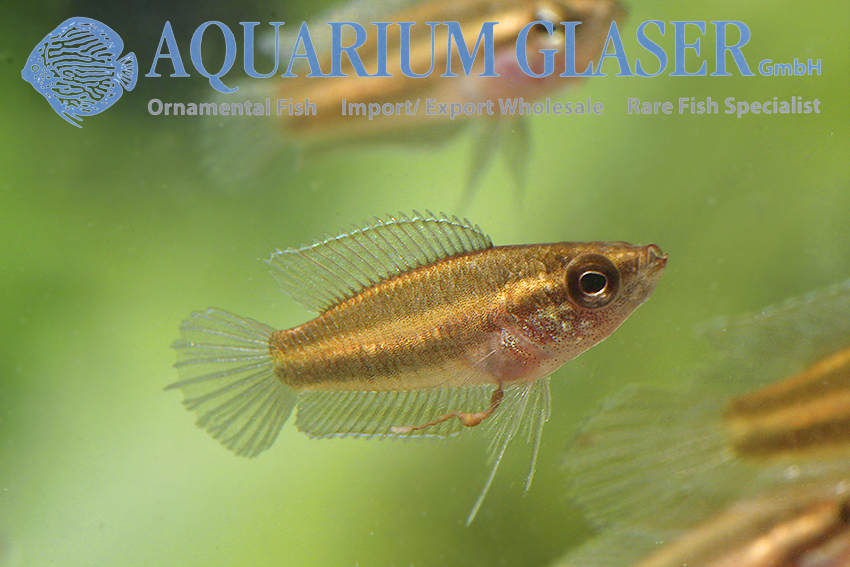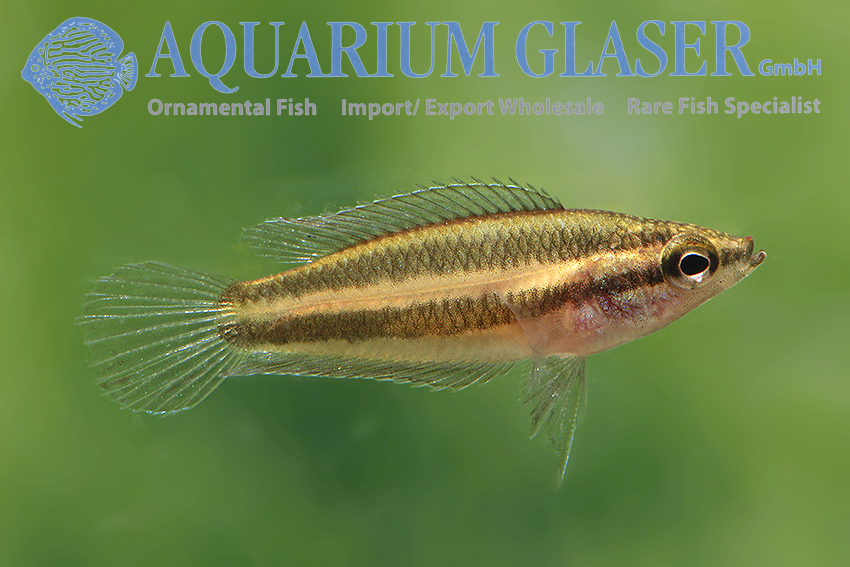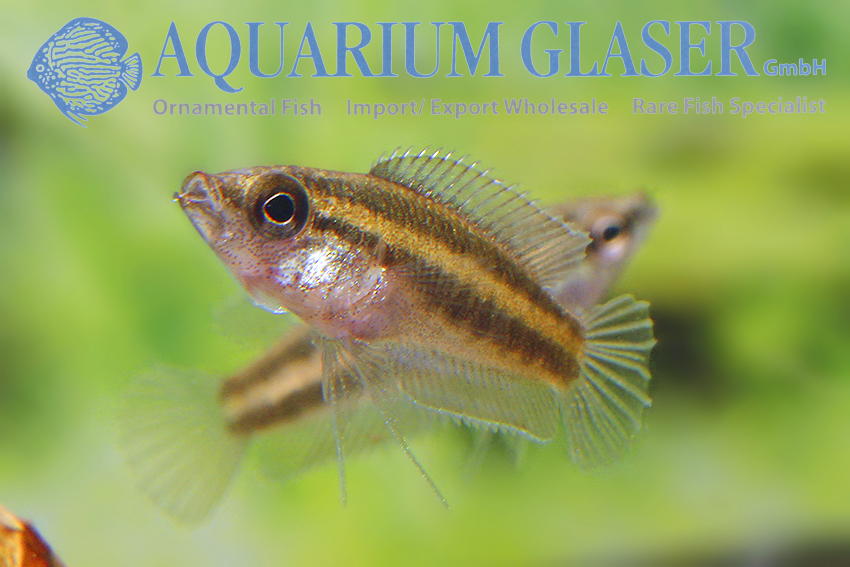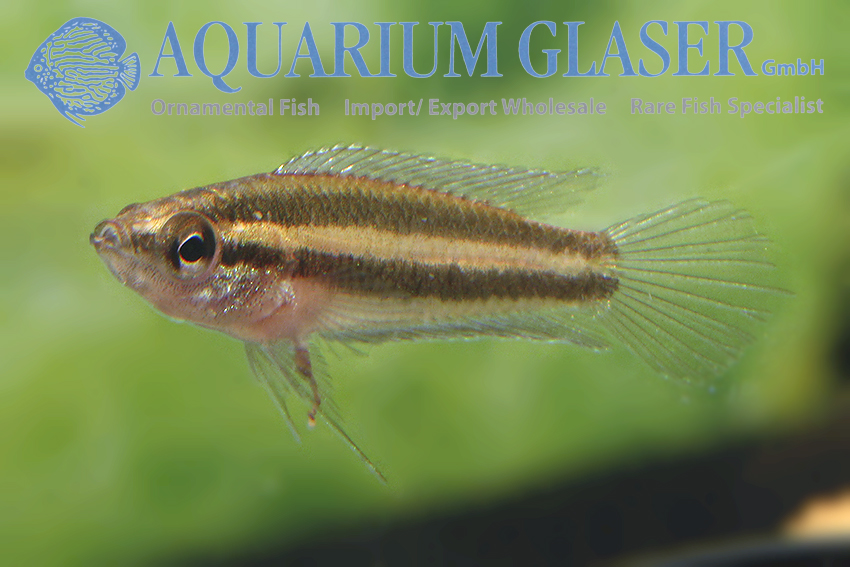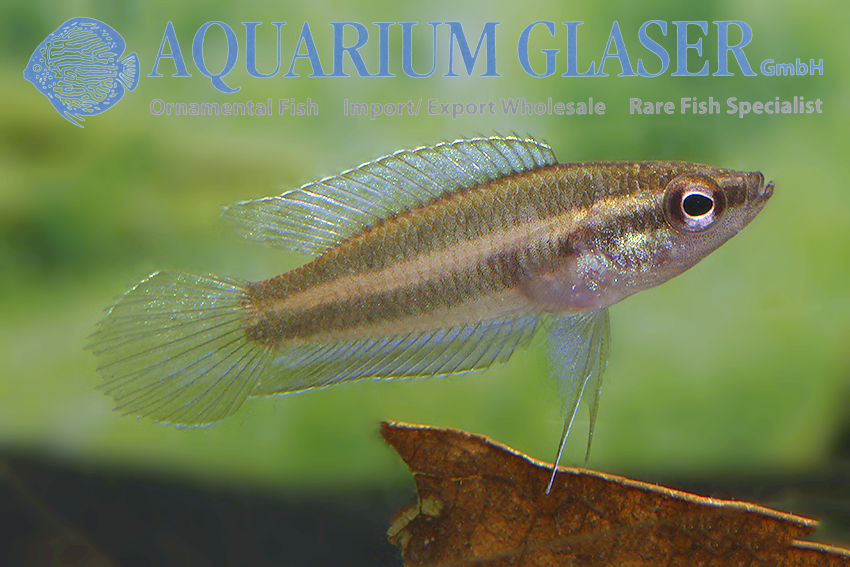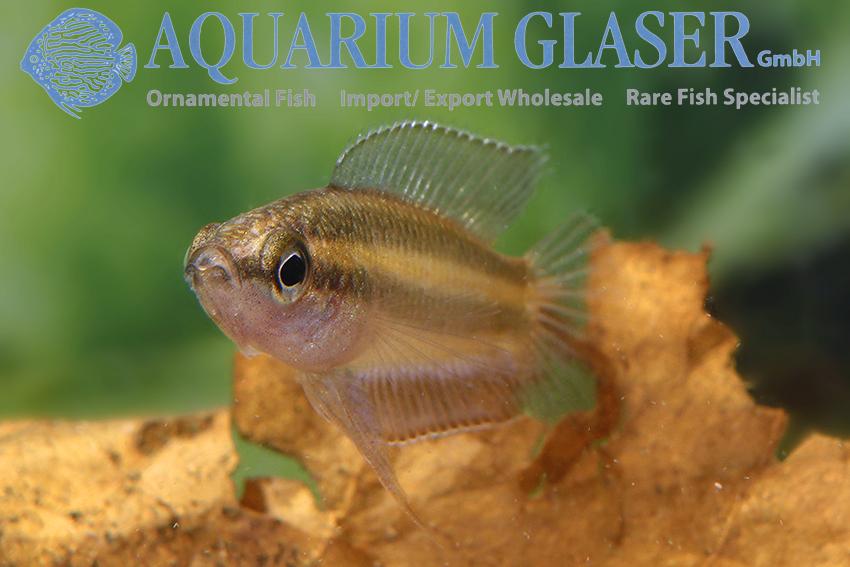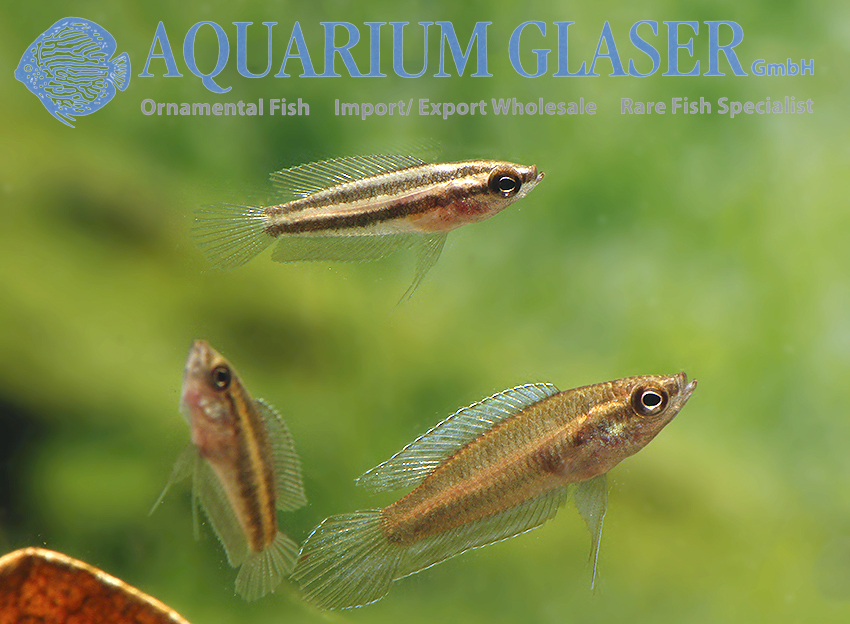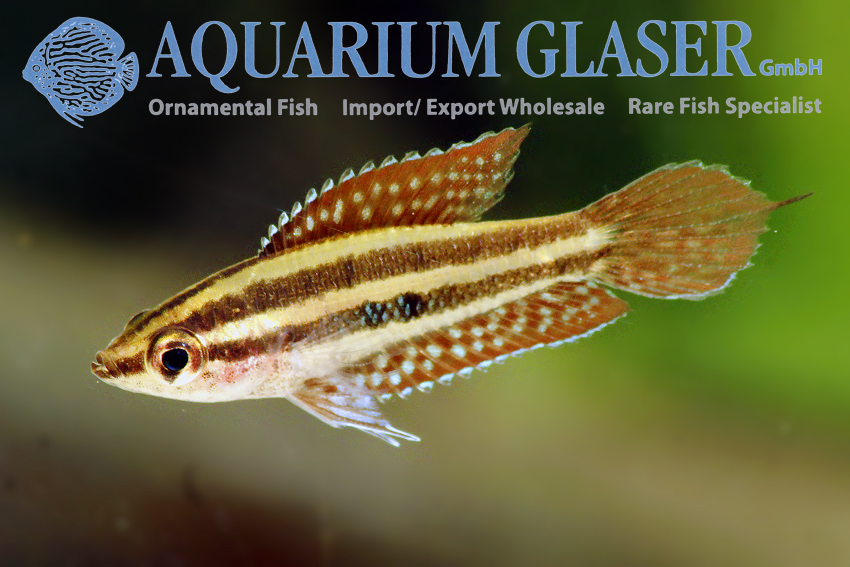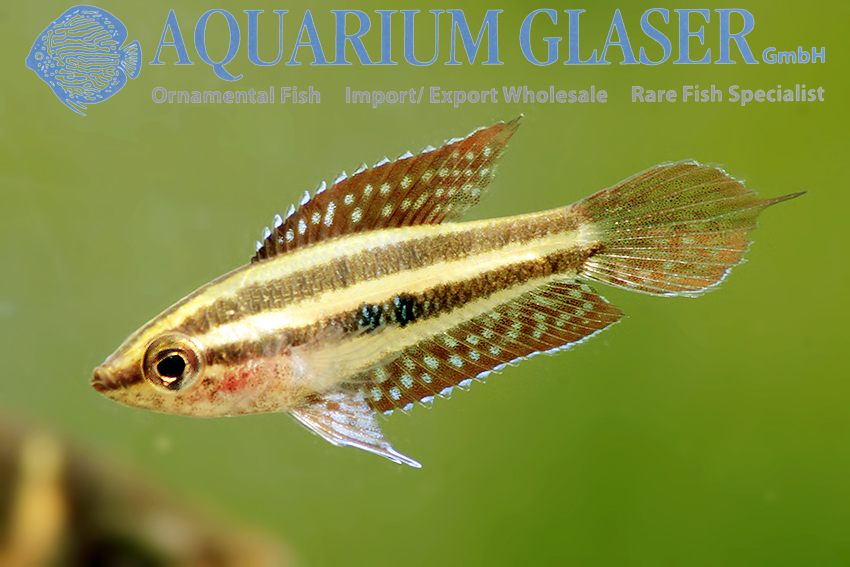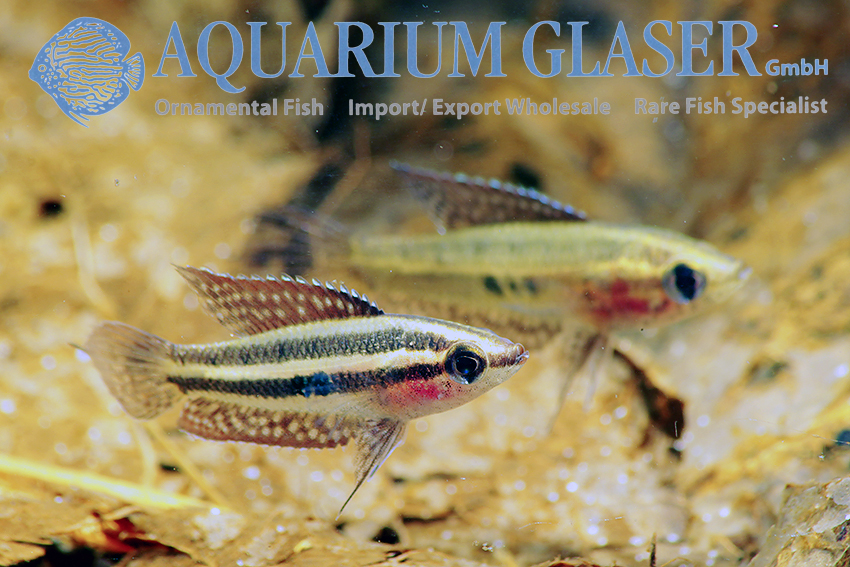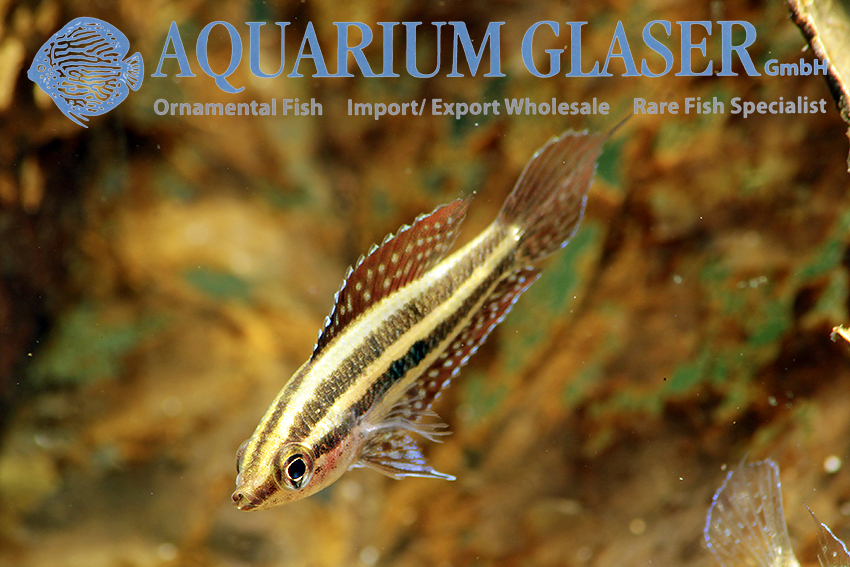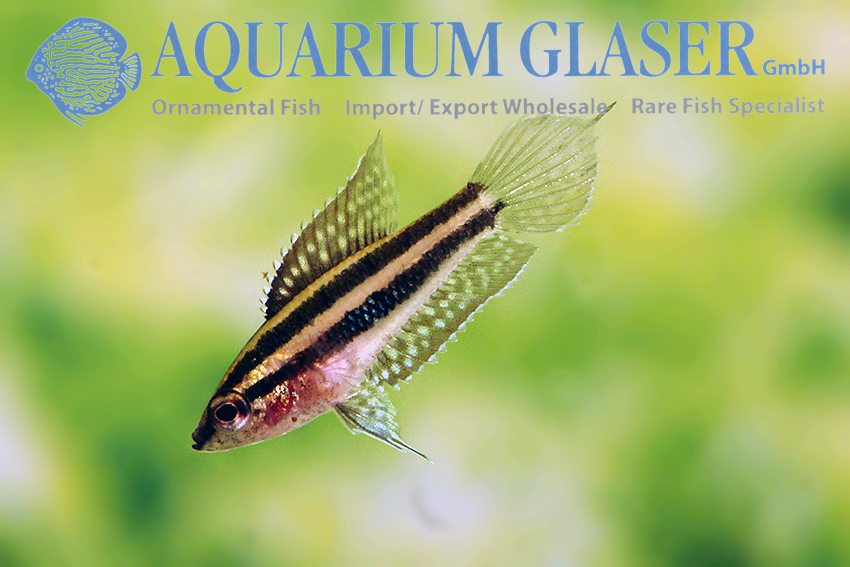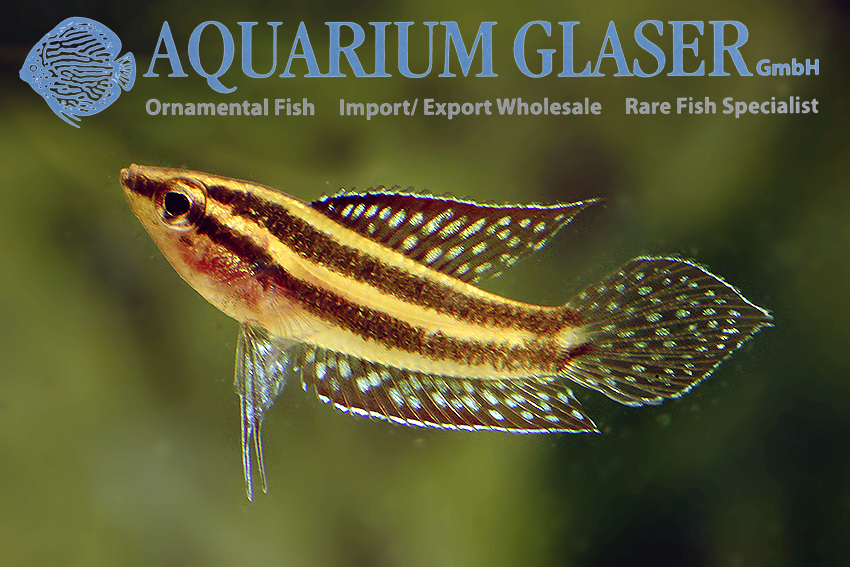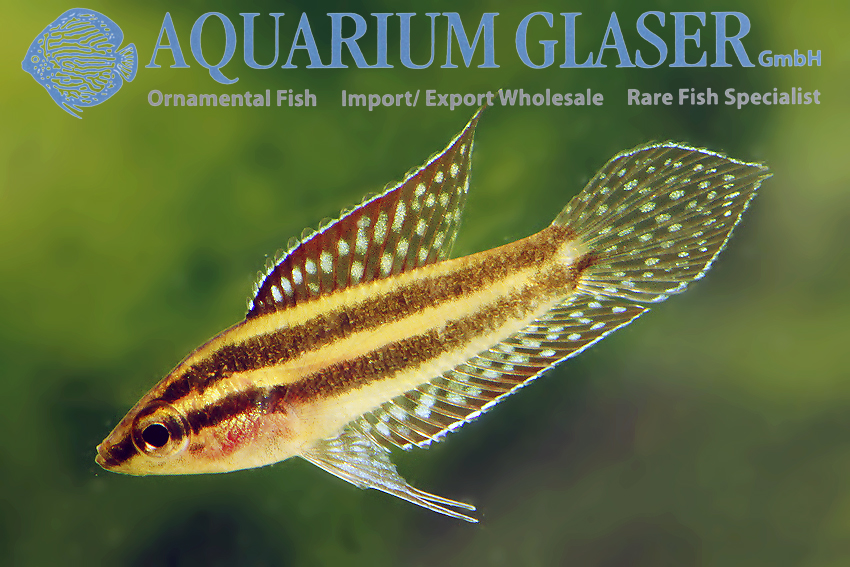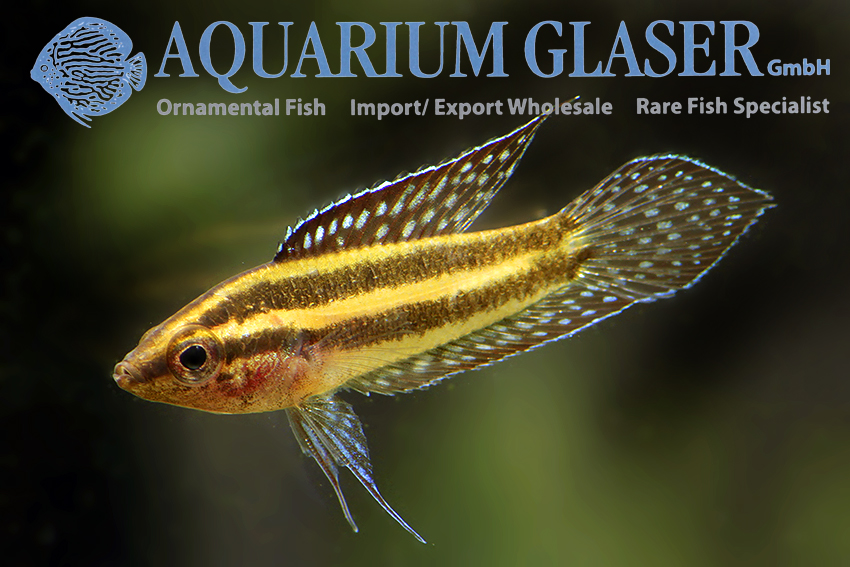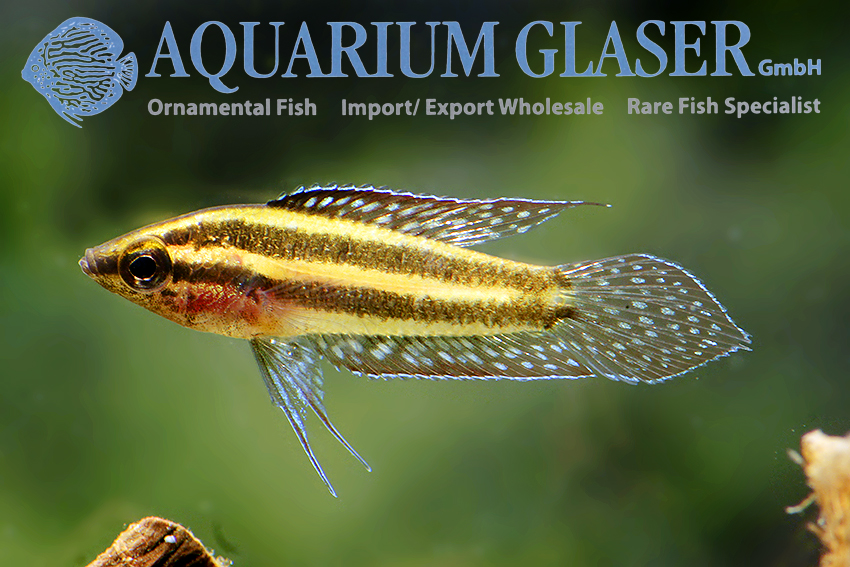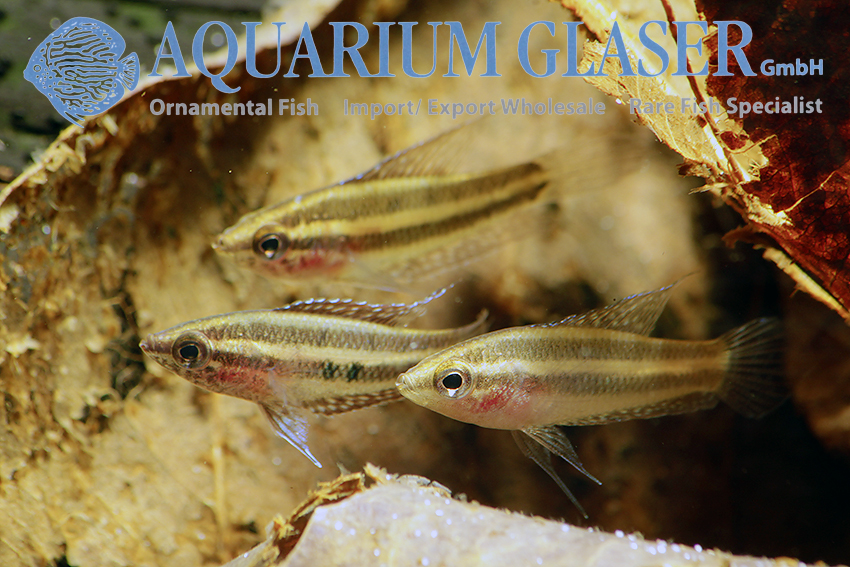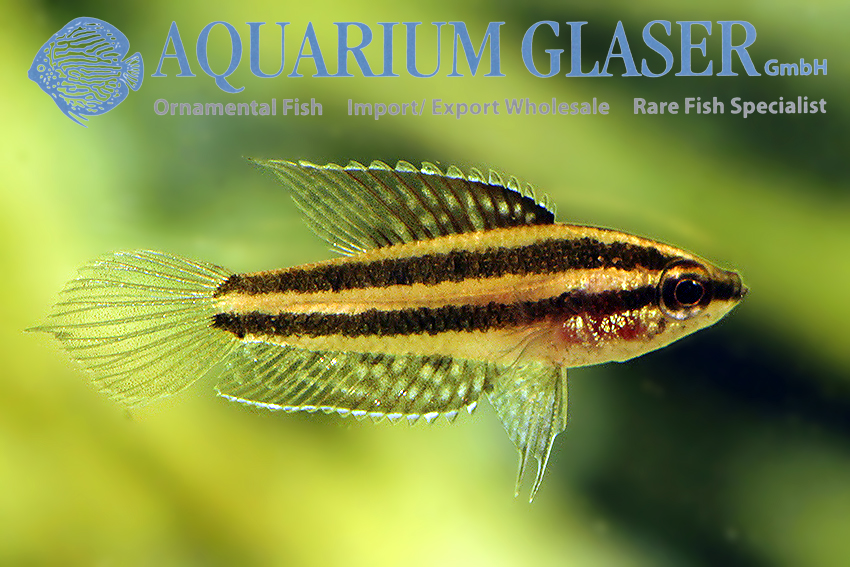The charming licorice gouramis are ideal inhabitants of nano tanks. They can not compare with other fish and so they settle even in nature extreme habitats. The water there is very poor in nutrients, very soft and acidic. These dwarfs among the anabantoids become astoundingly old and can easily reach an age of 5 or more years. So they compensate the low number of eggs they produce per spawning – usually less than 20. These tiny fish should be kept in one-species tanks. They can be fed exclusively with live brine shrimp nauplii (Artemia).
Parosphromenus gunawani comes from the island of Sumatra from the province of Jambi. It is a Parosphromenus species of the bintan type and was scientifically described only in 2012; previously it was known to specialized labyrinthfish enthusiasts as Parosphromenus sp. Danau Rasau. The fish attain a length of about 3 cm. In all licorice gouramis the sexes can be distinguished even in fright coloration. Both males and females look like Betta-females in that mood, but the caudal fin of the females is completely hyaline whereas in the caudal fin of the males always a iridescent shine can be observed that reflects the courtship-coloration.
For our customers: the fish have code 441133 on our stocklist. Please note that we exclusively supply the wholesale trade.
Lexicon: Parosphromenus: means “stands beside Osphromenus”; Osphromenus is another genus of anabantid. bintan: after the island of Bintan, the type locality; gunawani: the species is named in honour of Gunawan ‘Thomas’ Kasim, who, together with Horst Linke and others, collected the type specimens of this taxon.
Text & photos: Frank Schäfer





